Jul
09
2019
5 Ways To Protect Your Small Business From A Cyber Attack
For any small business, cyber security can sound like a confusing and expensive challenge that you just don’t have time for. However, for businesses of any size, cyber security is essential to not only protect your business but your customers and your reputation as well. Cyber security can even help you save time and money as the costs of a cyber-attack can stretch far and wide. Fortunately, there are easy ways to improve your cyber security and reduce the risk of a cyber-attack.
There are five things you can begin to implement to bolster the cyber security of your business.
It is likely your business relies on a great deal of critical data. This could be the personal information of your customers, payment details, quotes, orders, contracts and much more. If there is data that you couldn’t operate without, then you need to make sure you back up this information. Regular backups can help your business get back to normal after an adverse incident. For example, backups can help you to restore information and function after an issue such as theft, fire or flooding. The more backups you have, the quicker you can access the data you need. When you plan your backups think about the most important information. You only need to back up the data that is essential to your business that it requires to function. When backing up your data make sure you store it in a separate location. If you store your backups on your computer, then it could be stolen or damaged. Backups could be made on cloud storage or a USB stick. Make sure you can access it from alternative devices. For most businesses, the cloud serves as the most reliable place for backups. If you choose this method, make sure you select a trustworthy provider who is established and has clear security standards, practices and expertise to ensure your data is safe. Decide on when your backups should take place. This will depend on the amount of data your business processes. Make sure you stick to this schedule or backup more regularly.
Malware can easily infiltrate your business through the software your business uses. You can reduce the risk of a malware attack through a range of different methods like installing antivirus software on your various devices. This will help to control and highlight any malware risks. Having a firewall for your network can also be very helpful. Malware can often come from unknown sources. With this in mind, it is essential to advise your team on what they should and should not download. Cyber security training can go a long way in reducing cyber-attacks. Another critical aspect of reducing malware risks is to ensure IT programmes are up to date by installing the recommended updates from the provider. If a service no longer receives support from the manufacturer, then you should update the service as this will ensure better protection against malware attacks.
While many people will protect their computers and laptops with passwords and safety features, they often neglect to protect their smartphones. If your business issues smartphones to team members, they need to be kept as safe and secure as any other device in your organisation. It is important to password-protect all smartphones to help in the event of theft. To reduce the risk of malware, it is wise to keep apps and the device itself up to date so that maintenance and support is received from the manufacturer. If your team travel with their work phones, remind them not to connect to unknown Wi-Fi hotspots. They should use mobile data instead or avoid using their work phones for the internet all together. It is very important to install apps on your work phones that will enable you to track them if they are lost or stolen and this enables you to wipe the data if necessary.
Password protection plays a crucial role in cyber security. It is important to switch on password protection on all essential IT programmes and software on all your devices. For very important devices and programmes, a two-factor authentication system can give added security to your account. It is wise to advise your team to avoid using predictable passwords and to not use the same password for every device. Remember that your team members probably have many passwords to remember for both their work and personal life, so try to reduce this overload where possible. Single sign on technologies or a password manager can really help as your staff will only need to remember one password to access all of the passwords, they need for the programmes they use. If you do choose to use a password manager, then it is essential that the ‘master’ password is a strong one!
Phishing is one of the most popular cyber-attacks, and it is likely your business will be faced with a phishing email at some point. Fake email scams can look very convincing, and your staff may click onto these without even thinking but there are ways to limit the severity of an attack. You should provide training to your team of what to look for with phishing attacks. This includes grammar and punctuation mistakes, veiled threats, and the way they address the respondent. Then focus on protecting your business by only giving administrator accounts and rights to those that only really need them. This means that the potential damage from a phishing attack is reduced if staff have the lowest level of user rights.
If you do witness a phishing attack, protect your fellow business community by reporting the attack to Action Fraud.
There are five things you can begin to implement to bolster the cyber security of your business.
1. Conduct regular backups.
It is likely your business relies on a great deal of critical data. This could be the personal information of your customers, payment details, quotes, orders, contracts and much more. If there is data that you couldn’t operate without, then you need to make sure you back up this information. Regular backups can help your business get back to normal after an adverse incident. For example, backups can help you to restore information and function after an issue such as theft, fire or flooding. The more backups you have, the quicker you can access the data you need. When you plan your backups think about the most important information. You only need to back up the data that is essential to your business that it requires to function. When backing up your data make sure you store it in a separate location. If you store your backups on your computer, then it could be stolen or damaged. Backups could be made on cloud storage or a USB stick. Make sure you can access it from alternative devices. For most businesses, the cloud serves as the most reliable place for backups. If you choose this method, make sure you select a trustworthy provider who is established and has clear security standards, practices and expertise to ensure your data is safe. Decide on when your backups should take place. This will depend on the amount of data your business processes. Make sure you stick to this schedule or backup more regularly.
2. Reduce malware risks.
Malware can easily infiltrate your business through the software your business uses. You can reduce the risk of a malware attack through a range of different methods like installing antivirus software on your various devices. This will help to control and highlight any malware risks. Having a firewall for your network can also be very helpful. Malware can often come from unknown sources. With this in mind, it is essential to advise your team on what they should and should not download. Cyber security training can go a long way in reducing cyber-attacks. Another critical aspect of reducing malware risks is to ensure IT programmes are up to date by installing the recommended updates from the provider. If a service no longer receives support from the manufacturer, then you should update the service as this will ensure better protection against malware attacks.
3. Consider your mobile devices.
While many people will protect their computers and laptops with passwords and safety features, they often neglect to protect their smartphones. If your business issues smartphones to team members, they need to be kept as safe and secure as any other device in your organisation. It is important to password-protect all smartphones to help in the event of theft. To reduce the risk of malware, it is wise to keep apps and the device itself up to date so that maintenance and support is received from the manufacturer. If your team travel with their work phones, remind them not to connect to unknown Wi-Fi hotspots. They should use mobile data instead or avoid using their work phones for the internet all together. It is very important to install apps on your work phones that will enable you to track them if they are lost or stolen and this enables you to wipe the data if necessary.
4. Passwords, passwords, passwords.
Password protection plays a crucial role in cyber security. It is important to switch on password protection on all essential IT programmes and software on all your devices. For very important devices and programmes, a two-factor authentication system can give added security to your account. It is wise to advise your team to avoid using predictable passwords and to not use the same password for every device. Remember that your team members probably have many passwords to remember for both their work and personal life, so try to reduce this overload where possible. Single sign on technologies or a password manager can really help as your staff will only need to remember one password to access all of the passwords, they need for the programmes they use. If you do choose to use a password manager, then it is essential that the ‘master’ password is a strong one!
5. Prevent phishing
Phishing is one of the most popular cyber-attacks, and it is likely your business will be faced with a phishing email at some point. Fake email scams can look very convincing, and your staff may click onto these without even thinking but there are ways to limit the severity of an attack. You should provide training to your team of what to look for with phishing attacks. This includes grammar and punctuation mistakes, veiled threats, and the way they address the respondent. Then focus on protecting your business by only giving administrator accounts and rights to those that only really need them. This means that the potential damage from a phishing attack is reduced if staff have the lowest level of user rights.
If you do witness a phishing attack, protect your fellow business community by reporting the attack to Action Fraud.







